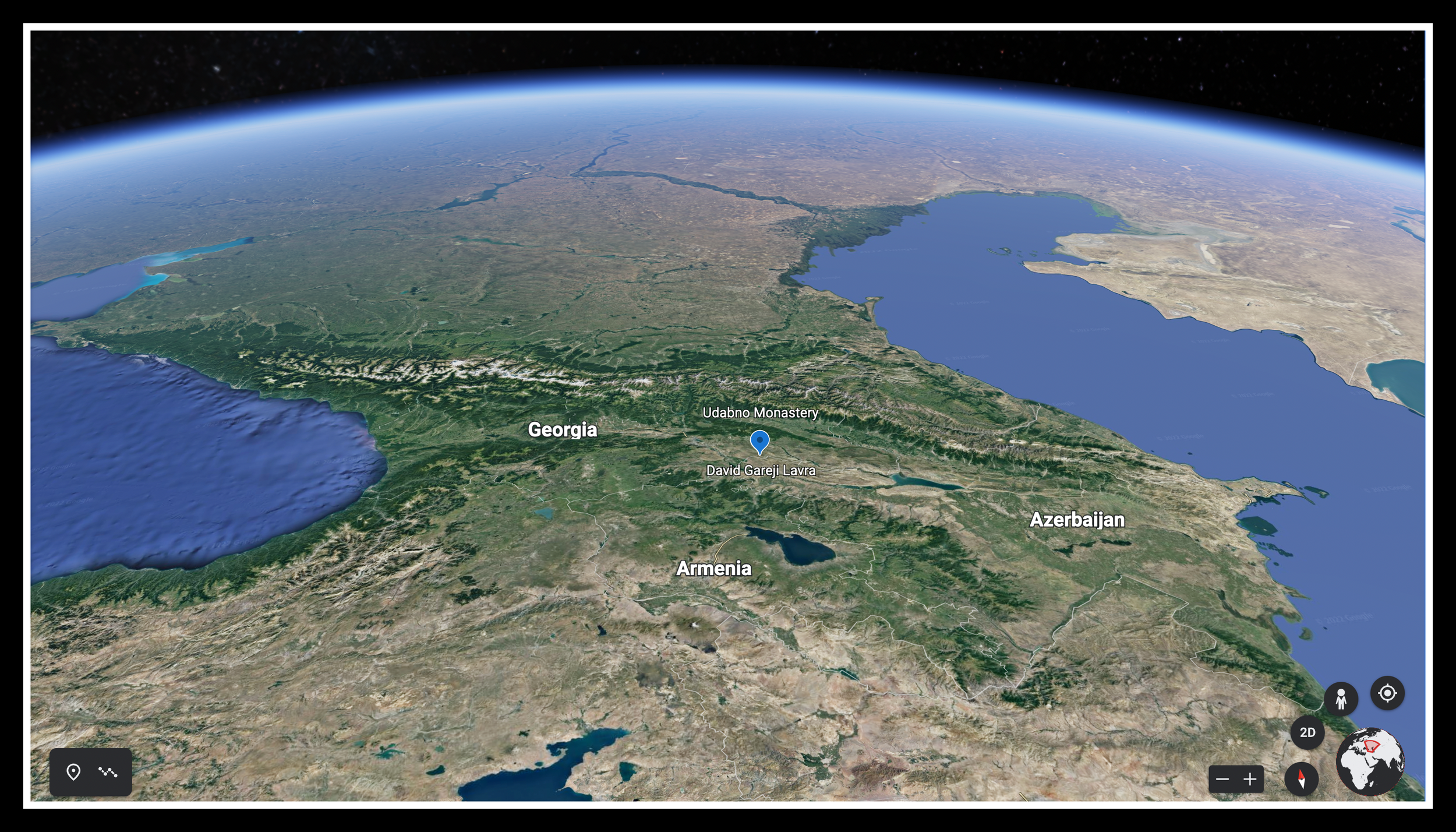147 - Random Tidbits and David Gareja Monastery (Tbilisi, Georgia)
DURING THE SOUTH OSSETIA WAR OF 2008, the Georgian military scrambled to call up reserves. In a move that boggles the mind, they announced the units being activated and mobilization rendezvous points… on television. Um, ‘kay. No need for Russian reconnaissance. Just turn on the fucking TV. Plan your bombing campaign accordingly. Go.
Want to make a statement in Georgia? Go on a hunger strike. In a land where the supra reigns supreme and counting plates after an obnoxious celebratory feast is considered a barometer for familial wealth, refusing to eat is like refusing to breathe. Tsotne Gamsakhurdia, a man arrested for espionage and the son of the former president Zviad Gamsakhurdia, gave it a go. He claimed to eat or drink nothing for 120 days. Sure, that’s impossible (at least as far as water goes), but he got his point across… I think. Not sure what his point was. I can lie about eating? People are serious about food. And drinking. Burp.
Traditional Georgian wine-making practices date back to 6000 B.C. They know wine and drink a shit-ton of it.
Georgians were smitten with McDonald’s. (Can you say McSupra?) Tbilisi has three of them. Every time I passed one, it was packed. And it wasn’t cheap. Supper for one could set you back $15 US. Ronald McDonald kicks ass.
I use Georgia font in blog posts. Coincidence?
Some Georgians believe it’s dangerous to go outside with wet hair.
I surmised everyone's last name ends in “-dze” or “-shvili.”
Bread is sacred and throwing it away a sacrilege, even if it falls on the ground. If you’re not going to eat it, you still elevate it somewhere (table, window sill, pedestal, etc.) Some throw in a kiss for good measure. How long must it sit? Dunno. The point is, wasting bread is blasphemous. The more you know…
I sat on a bench on Rustaveli Avenue and noticed a gentleman with a handgun tucked into the back of his dress pants. No uniform. No holster. Quasi-gangsta style.
I hopped in a Tbilisi cab with a middle-aged driver who was a Tupac Shakur fan. He cranked the volume ‘cause he knew I was down with that shit. Although his English vocabulary comprised roughly four words, he conveyed his disillusionment with the cost of obtaining a visa from the United States. I got the feeling he blamed me and hoped I had the authority to cut through the bullshit. I did not… frown.
France supported Georgia’s territorial integrity one hundred percent. Official statements condemned Russia’s unlawful occupation of South Ossetia and Abkhazia. They felt so strongly, they sold Russia four Mistral-class vessels (advanced helicopter carriers) for 600 million USD. (Sarcasm alert.)
The Obama Administration also claimed to support Georgia, listing the end of Russian occupation as a foreign policy objective. How’d that go? In a speech to Congress on the renewal of a nuclear peace treaty with Russia, Obama stated, "the situation in Georgia need no longer be considered an obstacle to proceeding with the proposed agreement." Why would it? The U.S. didn’t ignore Georgia, it just didn’t give a rat’s ass to start. I’m sure lack of pushback (i.e. appeasement) from the U.S. and E.U had nothing to do with current affairs in Ukraine. None. Zero. (High sarcasm alert.)
********
I ventured to an isolated group of ancient Orthodox Georgian monasteries skirting the border with Azerbaijan in eastern Georgia. The area contains thirteen, one on Azerbaijani soil, collectively known as the David Gareja monastery complex, named for St. David Garejeli who founded the original in the 6th century. I visited the two most accessible and, if the guidebook is correct, the best preserved. The first is Lavra, which harbors a resident monk community. It’s the site of the original caves, now used for sleeping quarters and meditation. St. David, one of the so-called Thirteen Syrian Fathers, brought a style of religious asceticism established in the Middle East.
On the hillside, above and behind Lavra, sit the remains of the Udabno Monastery. Along with a stupendous view of the savannah-like plains of Georgia and western Azerbaijan, you’ll find a series of caves comprising the monastery, including the refectory and main church. The caves are in shambles, but religious frescoes are still visible on the walls and ceilings of some. The entire complex has seen its share of cycles of destruction and rebuilding as a result of countless invasions (Turks, Persians, Mongols, etc.).



Courtesy of Georgia Explorer







































